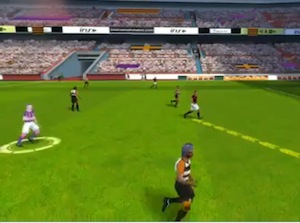 In 2008, we mentioned the upcoming release of Interzone Futebol, a sporting MMO with some promise.
In 2008, we mentioned the upcoming release of Interzone Futebol, a sporting MMO with some promise.
Over the past week, issues between local developers employed at the Western Australian office of Interzone and the US-based head office came to a head when Interzone’s VP of Business Development, Mike Turner, was confronted by employees.
Game Developer blog Tsumea have a good wrap of events, and for lots more detail, this blog has it in spades (and the Interzone Games URL now redirects to the blog). Finally, Interzone CEO Marty Brickey has responded to the allegations made over at Kotaku, as Seamus Byrne broke the story there in a big way.
The WA developers created the piece below to illustrate the context of what has been going on:
Like any disputes around intellectual property, employee entitlements and job security, it can be near impossible to get a clear overall picture. The video in question shows a bunch of obviously frustrated / angry employees and a defensive CEO not wanting to answer questions on the spot to a camera. The only certainty is that once it has reached to this stage, things have broken down to a level where no-one is likely to see a beneficial outcome.
One of the least certain aspects is why the transfer of game assets from Australia to Collision Games in Ireland – although the touted financial issues would likely be the driving force. Nor is there any reaction from publisher Gamigo on the situation.
The wash-up locally for this, is that Interzone Futebol may still see the light of day, but whether those who’ve worked on it to date get to share in those results is far from certain and arguably very unlikely.

Recent Comments